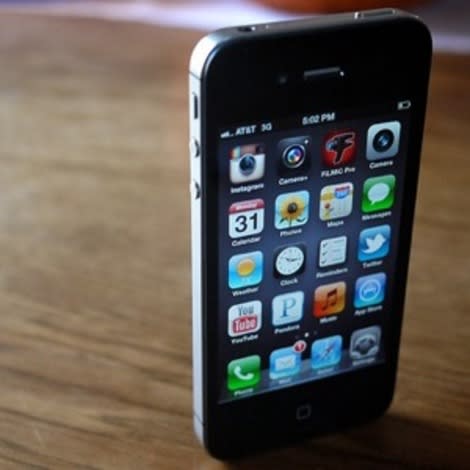Are IPads & IPhones Good Gifts for Kids?

by Janelle Sorensen, Chief Communications Officer, Healthy Child Healthy World
What do children age six to twelve want most this holiday season? According to a new report from The Nielsen Company,iPads, iPod Touches, and iPhones top the electronics wish list. However, those clamoring to stuff their kids' holiday stockings with the latest electronic gadgets would do well to ponder experts' warnings before buying one.
Few people appreciate that all of these wireless devices come with manufacturers' fine print warnings not to hold them next to an adult body, or thatcontrolled studiesshow that microwave radiation from cell phones weaken the brain's protective barrier, and that according to a recently published scientific report from Environmental Health Trust (EHT), children's heads absorb twice as much microwave radiation from cell phones as adults.
In addition, radiation from cell phones carried in shirts or pants pockets of adults is four to seven times higher than the guidelines set by the Federal Communications Commission (FCC) in the U.S. For the smaller bodies of children, of course, levels would be even much greater.
The reason for the discrepancy, EHT says, is that the process to determine radiation from cell phones is modeled on a 6-foot 2-inch tall, 220-pound man, with an eleven-pound head. Because this large skull represents only about three percent of the population, the test cannot accurately predict the radiation exposure of the other 97 percent, including children, nor does it even try to estimate exposures from pocket use.
"The standard for cell phones has been developed based on old science, old models and old assumptions about how we use cell phones, and that's why they need to change and protect our children and grandchildren," said Dr. Devra Davis, EHT founder and Healthy Child Healthy Word Advisory Board member.
Read the Fine Print for "Pocket Gifts"
Dr. Davis also calls parents' attention to another iPad fine print warning that states, "a small percentage of people may be susceptible to blackouts or seizures (even if they have never had one before) when exposed to flashing lights or light patterns such as when playing games or watching videos... Discontinue use of iPad and consult a physician if you experience headaches, blackouts, seizures, convulsion, eye or muscle twitching, loss of awareness, involuntary movement, or disorientation. To reduce risk of headaches, blackouts, seizures and eyestrain, avoid prolonged use, hold iPad some distance from your eyes, use iPad in a well-lit room, and take frequent breaks."
Consumers can find this and more on the iPad safety pamphlet. "Whoever wrote this probably had in mind the adult who can fork over $400 to $500 for the iPad," advises Dr. Davis. "Yet nowadays, even babies and toddlers are learning to read from wired devices and falling asleep to white noise played from phones placed under their pillows. A child's brain, healthy or otherwise, is cased in a thinner skull; that's why they absorb more microwave radiation. The brains of children with learning problems, autism or other neurological disorders may be more vulnerable to damage than those of their healthy friends and family members."
The iPad safety advice doesn't consider these issues, but does include information about exposure to radiofrequency energy. The pamphlet notes, "If you are...concerned about exposure to RF energy, you can further limit your exposure by limiting the amount of time using iPad WiFi +3G in wireless mode...and by placing more distance between your body and iPad Wi-Fi +3G."
"There's no denying these gadgets are fun; my kids love them too," says Rachel Lincoln Sarnoff, Executive Director and CEO of Healthy Child Healthy World. "But these technologies are developing faster than our ability to understand potential health impacts. We're not asking parents to not buy or use them, we're simply asking them to take precautions. It's better to be safe rather than sorry when it comes to our children's health."
Here are six easy steps you can take to protect your family:
1. Use a head set. Using a speaker, hands-free device, or earphones when speaking on a cell phone distances it from the body and head and minimizes your exposure to radiation.
2. Don't carry a cell phone on your body. Even when a cell phone is not in use, it emits radiation.
3. Beware of a weak signal. When a cell phone is in standby mode or when the signal strength is weak or blocked, exposure to radiation increases. Limit your use at this time.
4. Limit children's use. Studies consistently show that children are especially vulnerable to the effects of cell phone radiation. Generally, the younger the child, the more at risk they are.
5. Don't leave a cell phone on your nightstand or near your sleeping child.
You may be sleeping, but your cell phone is busy at work emitting radiation.
6. If your child is using a smart phone, iPad or iPod Touch to play games, turn off the wi-fi feature. You can also put it on "flight" or "off-line" mode to reduce emissions.
Learn more:
Thanks to Dr. Devra Davis and her colleagues at Environmental Health Trust for helping us draft this update and continuing to keep us informed on this important issue.
